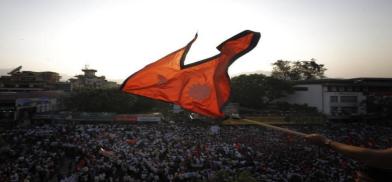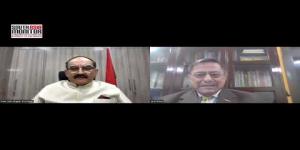Local elections in Nepal: A make or break for the ruling alliance ahead of general elections
For both Dueba and Dahal, the local elections may give a sense of how their cadre, supporters, and general public judge the performance of the government and the unlikely ruling coalition

Nepal will go into local elections this week on 13 May, the second time since the country adopted a new constitution in 2015 when it adopted a three-tier local governance system.
However, in comparison to 2017, when the country first went through the local elections, the political equations in the country have changed dramatically, even beyond recognition.
For parties the outcome of these polls will be of great significance, more so for making future electoral alliances for upcoming general elections scheduled for later this year. And, for the ruling coalition, which has decided to fight it out in alliance, it is will be a make or break situation.
Prospect of the ruling coalition
The country’s grand old party, the Nepali Congress, led by Prime Minister Sher Bahadur Deuba, and the CPN-MC, led by former prime minister Pushpa Kamal Dahal Prachanda, are the largest parties in the ruling alliance, which also include smaller parties, mostly breakaway factions of bigger parties.
In July 2021, when Dueba came into office, there were doubts regarding the longevity of his government. But not only did he oumost belie apprehensions but also surpassed expectations by getting the controversial US aid agreement, the Millenium Challenge Corporation Compact (MCC-Compact) ratified in the parliament.
For both Dueba and Dahal, the local elections may give a sense of how their cadre, supporters, and general public judge the performance of the government and the unlikely ruling coalition.
However, this time, it may not be easy for Dahal.
Known for his fierce opposition to the MCC, Dahal’s image, reputation, and even commitment to the communist ideology has increasingly been questioned by the party cadre and the public alike when he decided to back the MCC.
For other smaller parties in the ruling alliance, the local elections are a test of their survival. Although the alliance managed to work out a seat-sharing agreement, many of their joint candidates are facing a rebellion by local leaders of ruling parties. In the seats that went to smaller parties, this scenario is more evident.
Since July, the CPM-UML, despite being the biggest party in the parliament, is sitting in opposition. The party is led by former prime minister KP Sharma Oli, a communist leader with nationalist credentials, whose popularity peaked through his anti-Indian rhetoric in the last few years.
The CPN-NCP has not got any significant chance to challenge the ruling alliance ever since the party was pushed out of power last year. The local elections are the first such chance for it.
During his tenure in power, Oli—known for his autocratic working style which resulted in the split of what was then united Nepal Communist Party (NCP) — pushed the country into a constitutional crisis, not once but twice, that too when countries around the world were battling the disastrous Covid wave, caused by the Delta variant. Ties with India, Nepal’s closest ally, plunged to a historical low.
Infighting among Madhesis parties in the Madhes region, the lowland region along the Indian border, where Oli’s party has been the weakest, has given the party a unique opportunity to make inroads.
His moves for early elections in 2021 were checked by the Supreme Court and opposition parties. For Oli, who often claims to be the most popular Nepali leader, the local elections are a way of testing his strength ahead of crucial general elections.
(SAM)









Post a Comment